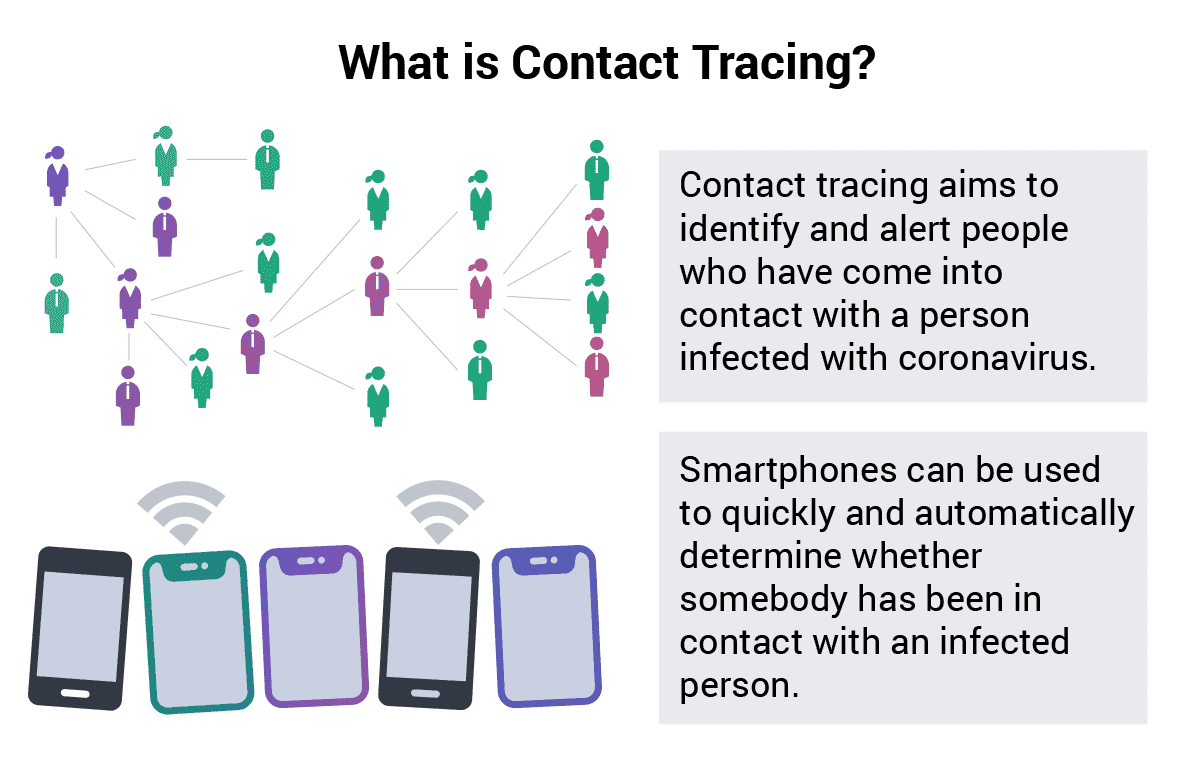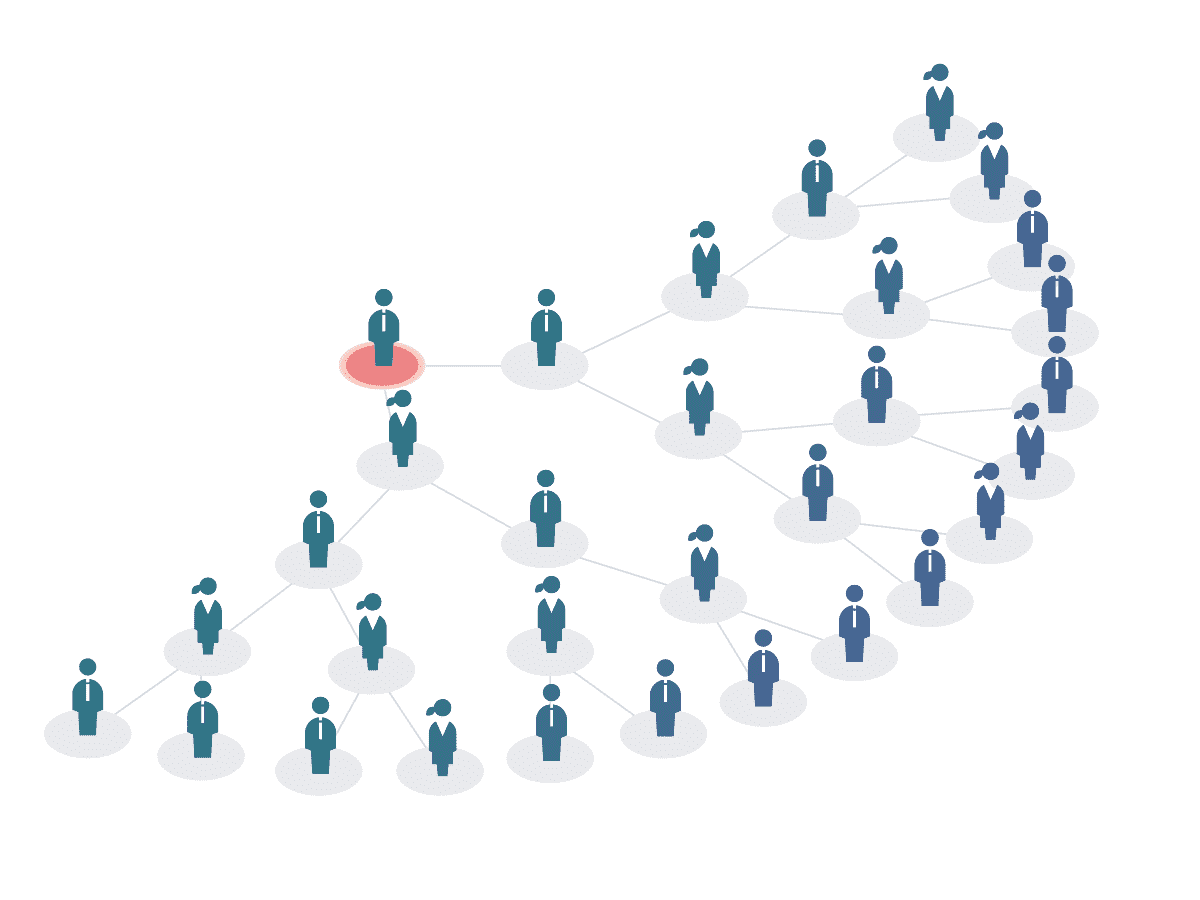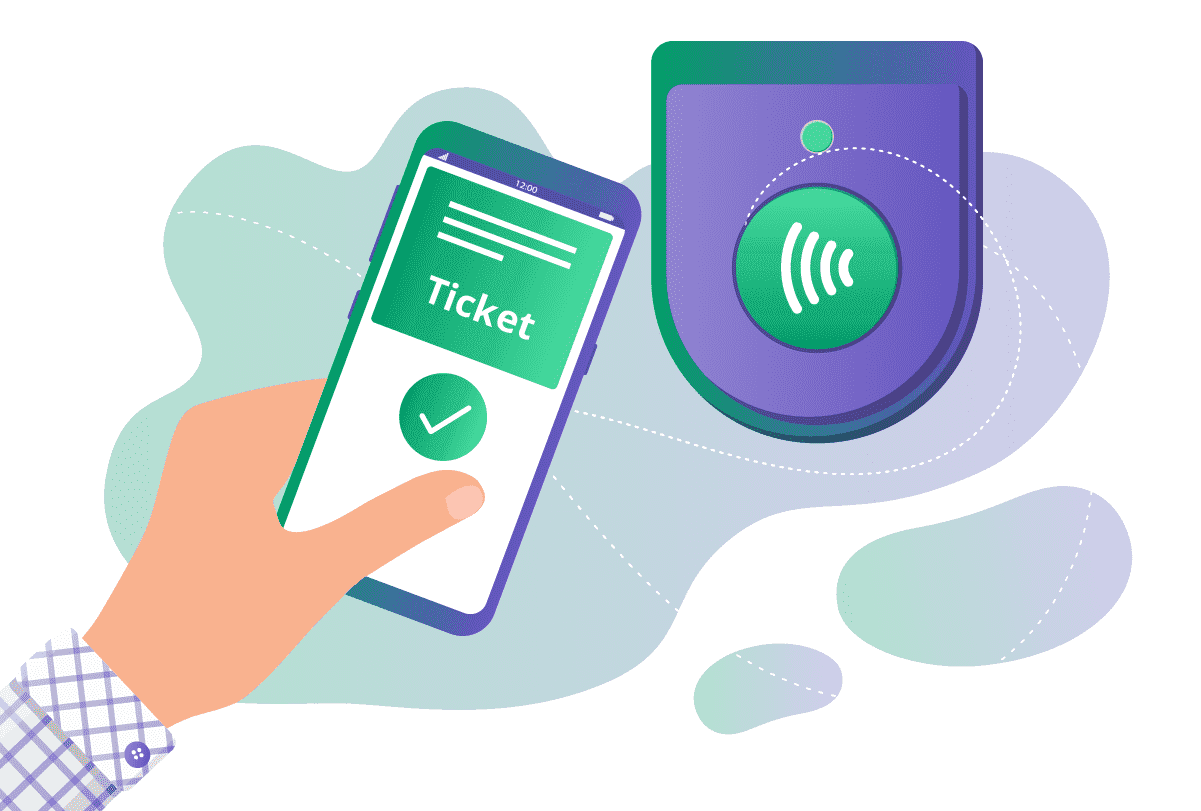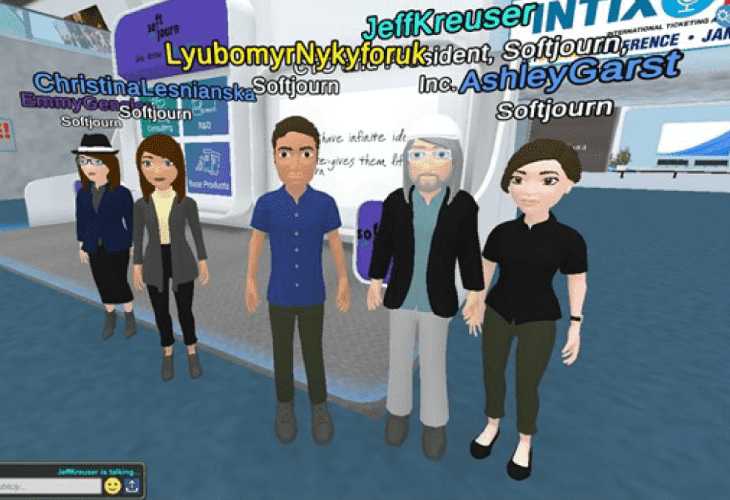Events are starting to return — some completely virtual, others in hybrid form. It will still be some time before we see sold-out shows. Until then, many ticketing professionals are figuring out how to make the most of the current situation.
Restrictions on gatherings and public fear have put high expectations on ticketing platforms and event organizers. Finding compromises and solutions for event planning made complicated by the pandemic is no easy job, but the right technology can help.
Automated COVID-19 contact tracing is one of those solutions. By building contact tracing directly into event registration systems and access control apps, ticketing platforms can meet local regulations, improve event safety, and rebuild patron confidence. When paired with CDC guidelines such as wearing masks, social distancing, and visitor screening, offering contact tracing can help restore customer confidence in attending live events.
What is Contact Tracing?
Contact tracing is a long-used method used to successfully fight outbreaks, including measles, HIV, and Ebola. Public health workers use tracing to find carriers of infectious diseases and “trace” their paths. This often requires contacting the infected person to get information on where they’ve been within a certain time period. These are used to create track and trace lists of at-risk individuals.
With this information, health officials can locate who came into contact with the infected party and identify the likelihood of transmission. Those at risk of transmission can then be asked to self-quarantine, thus preventing further spread of the virus.
By automating contact tracing, those who are at risk can be identified more quickly and notified to quarantine themselves. Manual contact tracing can also be improved because there is a defined record from the infection event. Traditional contact tracing often relies on the memory of those who potentially transmitted the virus, which can be limited.
Countries around the world are already using contact tracing against COVID-19 with great success. States in the U.S. have also created COVID tracing teams.
Automated contact tracing can be added to both mobile apps and wearables that use Bluetooth technology. Companies such as PC Nametag, Proxxi, and Accent Systems have developed wristbands that vibrate or buzz when close to someone also wearing such a band.1 This reaction helps enforce social distancing. These wristbands also track how often they come into contact with other bands, creating track and trace lists.

Pair Contact Tracing with Visitor Screening
Ticketing platforms and event organizers can also use visitor screening to encourage those presenting coronavirus symptoms to stay home. The CDC cautions that visitor screening is not a replacement for other protective measures such as social distancing, but can be considered part of proactive event planning during the pandemic.
Visitor screening forms can be added as part of the ticket purchase flow. With a few simple yes or no questions, such as “have you experienced flu-like symptoms recently” or have you travelled overseas recently,” organizers capture additional information about patrons and can plan according to their responses.
For example, patrons who present symptoms can be encouraged to attend the event via a livestream rather than visiting the venue.
How Events Are Currently Using Contact Tracing
Professionals in the event industry have incorporated contact tracing into their event manifests. For example, everyone in the NFL team environment must wear a Kinexon SafeZone tag on a daily basis.2 As they check in for the day, they receive a wearable device. They return the device at the end of the day so that data can be downloaded and the device disinfected. The NBA is also using the device in combination with its “bubble” in Florida.
Professional Bull Riders, which has been hosting events since April 25, made sure to educate staff on contact tracing.3 They successfully held events in 15 different states and had no reported incidents of virus transmission.
In a German study, researchers gave concertgoers a digital contact tracer as well as fluorescent disinfectants to show which surfaces they touched the most. The study found that when indoor events follow strict policies such as good ventilation and hygiene protocols, there is a “low” impact on infection rates. Even though the findings were potentially useful, skeptics would like to see the study replicated to ensure accuracy and veracity.
Still, those using a combination of safety protocols and anti-transmission methods show that there is possibility for live events to be held when the right steps are taken.
How Automated Tracing Can Work With Event Technology
Both wearables and phone apps that carry out contact tracing rely on BlueTooth technology.
An example of a contact tracing application is Exposure Notifications, created by Apple and Google. The two tech giants teamed up earlier this year to create a contact tracing framework to be used by governments. Apple and Google are responsible for the software on more than 99% of phones on the planet, and eight out of 10 Americans own a smartphone. 5
The Exposure Notification system checks IDs against positive COVID-19 cases, and if there is a match, notifies the user. It also provides instructions from public health authorities on how to stay safe after potential exposure.
On the system’s webpage, Google emphasizes that only public health authorities can use the Exposure Notification system. Those authorities must meet specific criteria around privacy, security, and data use.
Exposure Notifications has been adopted by more than 20 countries worldwide, and is being explored by 25 U.S. states, according to Apple and Google’s most recent check-ins.
Improved Tracing with Machine Learning
Berlin researchers recently developed a new machine learning model that could help BlueTooth contact tracing systems understand the severity of potential COVID-19 transmission.6
The Fraunhofer Heinrich Hertz Institute created a model that measures whether the received signal strength of a second party's outbound BlueTooth signal exceeds a cutoff "high risk" value. The current findings are only for a group of 48 participants, and researchers are looking for more willing participants to further improve the model's ability.
Finding and contacting those at highest risk could help restrict further virus spread more efficiently. BlueTooth-based contact tracing systems presently deployed worldwide do not have much ability to discern between high-risk and minimal contact.
A better ability to spot potential spread and lessen it could help live events come back, instead of waiting in limbo for a vaccine.
How Automated COVID-19 Contact Tracing Can Help Live Events
Even at low adoption rates, contact tracing is a powerful tool for mitigating virus spread. Gatherings held inside enclosed spaces are unique opportunities for automated contact tracing. Live events are one of those opportunities.
Live events are controlled environments. With digitized access control, event organizers know who goes in and who comes out. Ticket purchases can include opting into automated COVID-19 contact tracing. This creates a database of contact information for event organizers to use if an infected party is identified. Contactless ticketing can further enhance this process by helping everyone stay socially distant.
Contact tracing apps can track patrons throughout a location using geolocation or other GPS technology. With a proximity record, event organizers have a list of at-risk patrons to contact if a positive case is found. Because of the previously collected information, contacting at-risk patrons is much easier. An in-app communication system would also make the process seamless and inform patrons faster.

Smartphones and other devices can make COVID-19 contact tracing easier by automating the process.
With regard to privacy concerns, tracing would not follow patrons to their homes. Instead, the contact tracing would focus on who they may have been in proximity of solely at the event. Rather than searching a long list of attendees, more time and attention can be spent on those most likely to have come into close contact with the infected party.
Employees can be kept safer with contact tracing, too. COVID-19 is known to stay on hard surfaces, such as door handles, for several hours after being touched by an infected person. Access control systems that check employee movement throughout a venue can show specific times when an infected person passed through. By matching this information to other employees’ paths, event organizers find those at-risk and add them to a track and trace list.
Should You Add Tracing to Your Access Control App?
Following CDC COVID guidelines, which include wearing masks and social distancing at least six feet away from others, are also necessary to keep staff and patrons safe. Other methods such as checkerboard seating and in-seat delivery are also useful in helping live events return.
So can automated COVID-19 contact tracing help live events? Automated contact tracing won’t resolve everything on its own. It won’t replace human contact tracers, but instead supports their work. By combining several safety methods together, ticketing platforms and event organizers can show patrons that their safety and wellbeing is front of mind.
1 Schoening, E. (2020, October 28). How to Use Event Technology for Social Distancing and Contact Tracing.
2 Golden, J. (2020, July 22). Here's the device the NFL and NBA are using for coronavirus contact tracing and social distancing.
3 Traub, M. (2020, September 23). Professional Bull Riders Continue On With Symptom-Free Season.
4 Kwai, I. (2020, November 03). Coronavirus Study in Germany Offers Hope for Concertgoers.
5 Demographics of Mobile Device Ownership and Adoption in the United States. (2020, June 05).
6 Machine learning algorithm helps Bluetooth contact tracing systems discern per-event risk of COVID-19 transmission. (2020, October 08).












